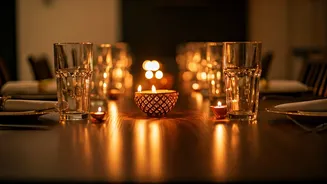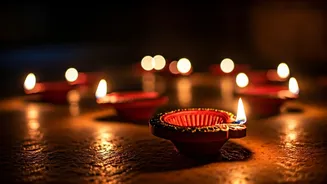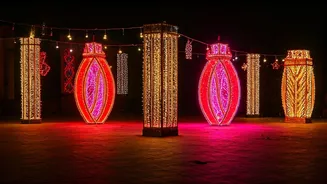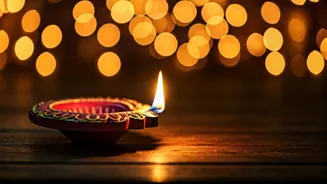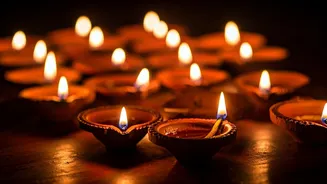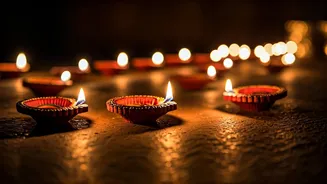Family's Diwali
The essence of Diwali, as captured in this article, is intricately woven into the fabric of a family's unique traditions. The family, described as Westernized
with Arya Samaj leanings, exhibits a healthy skepticism towards rigid rituals and religious formalities. Yet, Diwali holds a special place in their hearts, primarily due to the efforts of the family matriarch, who has curated her own set of personal family rituals over the years. This illustrates the beautiful flexibility in which traditions can be adapted to personal belief. They find deep meaning and connection in their celebrations, which goes beyond standard religious practices. The focus is on creating a sense of unity and shared experiences within the family during this special time of the year.
Personal Rituals
This Diwali, the family's celebrations center around a collection of distinctive rituals. The heart of their festivities includes a gathering where each member shares a moment of gratitude and a prayer for the future. The simple act helps in building a circle of trust and belonging, where family members are able to support one another. It has led to the creation of shared memories. The author's reflections focus on the importance of personal expression within traditional frameworks. One particular family member described the smell of flowers, particularly lilies and marigolds, the sweet taste of Diwali desserts, such as kheer kodom and kalakand. Diwali is also about new books, new clothes, and the warm, dancing glow of diyas, which set the whole house aglow, symbolizing the victory of light over darkness.
Many Ramayanas
The article draws a parallel between the family's approach to Diwali and the broader concept of embracing multiple interpretations of traditional stories like the Ramayana. Drawing inspiration from Anand Neelakantan's 'Many Ramayanas, Many Lessons,' the article underscores the idea that stories can hold different meanings depending on the context and the storyteller. One compelling example is the varied portrayal of Sita in South Indian folk Ramayanas, where she walks around Ravana's cremation pyre, highlighting the character's deep impact. This aligns with the family's desire to find the versions and practices that resonate with them. The reading of Neelakantan's work is seen as a way to engage with the epic, creating a modern version of ancient oral storytelling traditions.
Modern Adaptations
The author finds resonance in exploring different perspectives and versions of the Ramayana. The author emphasizes that one must approach traditions with an open mind, adapting them to personal beliefs and experiences. The story is a reminder that traditions are not static; they evolve with each generation. The author is taking time this Diwali week to read 'Many Ramayanas,' embracing the lessons and integrating them into their celebrations. The author also suggests reading the book aloud as a family, especially if there are children. The author encourages readers to reflect on their own traditions and rituals, inspiring them to find new meaning in their Diwali celebrations. This approach encourages readers to seek out and appreciate a more personalized approach to religious traditions.
